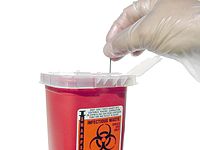
Photo from wikipedia
OBJECTIVE to analyze the prevalence of inadequate human anti-rabies post-exposure prophylaxis in patients attacked by animals in the state of Ceará, Brazil, 2007-2015. METHODS this was a study of the… Click to show full abstract
OBJECTIVE to analyze the prevalence of inadequate human anti-rabies post-exposure prophylaxis in patients attacked by animals in the state of Ceará, Brazil, 2007-2015. METHODS this was a study of the prevalence of inadequate prophylaxis procedures, using data on reported cases of accidents involving animals potentially capable of transmitting rabies registered on the Notifiable Diseases Information System (SINAN) from January 2007 to December 2015. RESULTS of the 231,694 reported cases, 95.8% were found to have inadequate procedures, especially in young people aged under 19 (37.6%), with no difference between the sexes (p=0.04); higher prevalence rate of inadequate procedures occurred with regard to exposure to bites (PR=1.03 - 95%CI 1.02;1.03), multiple injuries (PR=1.07 - 95%CI 1.06;1.07), accidents involving dead/missing animals (RP=1.05 - 95%CI 1.05;1.06), and vaccine treatments (RP=1.03 - 95%CI 1.02;1.03). CONCLUSION high prevalence of inadequate procedures indicates the need for a better epidemiological evaluation of cases and compliance with the Human Rabies Prophylaxis Technical Standards, in order to ensure adequate anti-rabies prophylaxis procedures.
Journal Title: Epidemiologia e servicos de saude : revista do Sistema Unico de Saude do Brasil
Year Published: 2018
Link to full text (if available)
Share on Social Media: Sign Up to like & get
recommendations!